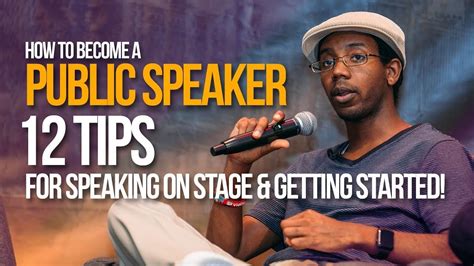Are you looking to enhance your public speaking skills and captivate your audience? Whether you’re a seasoned presenter or just starting out, mastering the art of the spoken word is essential for making a lasting impact. In this blog post, we will explore the key elements of becoming a confident and compelling public speaker. From finding your authentic speaking style to mastering nonverbal communication and using storytelling to connect with your audience, we will cover it all. Join us as we delve into effective vocal delivery, strategies for handling Q&A sessions, and techniques for perfecting your delivery through practice and rehearsal. By the end of this post, you’ll have the tools and techniques to become a confident and engaging public speaker. Let’s unlock your full potential and unleash the power of your voice!
Table of Contents
Finding Your Voice: Discovering Your Authentic Speaking Style
When it comes to public speaking, finding your voice is essential to establishing an authentic and engaging connection with your audience. Your speaking style is a reflection of your personality, experiences, and values, and discovering your authentic voice is a process of self-discovery and self-expression.
One key element of finding your voice is understanding the importance of being true to yourself and embracing your unique qualities as a speaker. It’s natural to admire other speakers and want to emulate their style, but the most impactful speakers are those who are genuine and true to themselves.
Another important aspect of discovering your authentic speaking style is gaining self-awareness and understanding how your values, beliefs, and experiences shape the way you communicate. By embracing your unique perspective and sharing your authentic self with your audience, you can create a powerful connection that resonates with them on a deeper level.
Ultimately, finding your voice is about embracing your individuality, expressing yourself with confidence, and connecting with your audience in a meaningful way. It’s a journey of self-discovery and growth that can lead to more impactful and memorable speaking engagements.
Crafting Compelling Presentations: The Key Elements to Include
When crafting a compelling presentation, there are several key elements that must be included to ensure that your message is effectively communicated to your audience. One of the most important elements to include is a clear and engaging opening that captures the attention of your audience from the start. This could be a powerful quote, a thought-provoking question, or a compelling story that sets the tone for the rest of your presentation.
Another essential element to include in your presentation is a well-structured and organized body. This should include a logical flow of ideas, transitions between key points, and relevant supporting evidence to back up your main arguments. Using visual aids such as slides or props can also enhance the delivery of your message and keep your audience engaged throughout the presentation. Additionally, incorporating storytelling and narrative into your presentation can create a powerful connection with your audience and make your message more memorable.
Furthermore, an effective presentation should also include opportunities for audience engagement. This could be through interactive activities, Q&A sessions, or simply asking for feedback or opinions from the audience. Engaging your audience in this way can make them feel more invested in your message and create a more impactful overall experience. Finally, a strong closing that summarizes the main points and leaves the audience with a clear call to action is essential for a compelling presentation. This could be a challenge, a solution, or a call to change.
In conclusion, when crafting a compelling presentation, it’s important to include key elements such as a compelling opening, a well-structured body, engaging visual aids, storytelling, audience engagement, and a strong closing. By incorporating these elements into your presentation, you can create a more impactful and memorable experience for your audience, and effectively communicate your message.
Building Confidence: Overcoming the Fear of Public Speaking
Public speaking can be a daunting task for many people, but it is a skill that can be developed and mastered with the right mindset and approach. One of the key elements to overcoming the fear of public speaking is building confidence. Confidence is the belief in oneself and one’s abilities, and it is essential for delivering a successful and impactful presentation.
One way to build confidence in public speaking is through preparation and practice. By thoroughly preparing your presentation and rehearsing it multiple times, you can familiarize yourself with the content and anticipate potential challenges or questions. This preparation will help you feel more confident and in control when delivering your speech.
Another important aspect of building confidence in public speaking is to reframe your mindset. Rather than focusing on the fear of making mistakes or being judged by the audience, shift your focus to the value you are providing to your audience. Remind yourself that you have valuable insights or information to share, and that your audience will benefit from hearing what you have to say.
Additionally, seeking opportunities to practice public speaking in low-stakes settings, such as speaking in front of a small group of friends or colleagues, can help build confidence gradually. By starting small and gradually increasing the size of your audience, you can acclimate yourself to the experience of public speaking and build confidence over time.
Mastering Nonverbal Communication: Gestures, Posture, and Eye Contact
When it comes to public speaking, the words you say are only part of the message you convey. Nonverbal communication plays a crucial role in how your audience perceives you and your message. Gestures, posture, and eye contact are all essential elements of nonverbal communication that can greatly impact the effectiveness of your presentation.
First and foremost, gestures can enhance your message and make it more engaging for your audience. Using hand movements and other nonverbal cues can help emphasize key points, convey emotion, and create a sense of connection with your listeners. However, it’s important to use gestures in a natural and authentic way, avoiding excessive or distracting movements that could detract from your message.
In addition to gestures, your posture also communicates a great deal to your audience. Standing tall and maintaining an open, confident stance can convey strength and authority, while slouching or fidgeting may project nervousness or insecurity. Being mindful of your posture and using it to your advantage can help you appear more confident and credible to your audience.
Finally, eye contact is a powerful tool for engaging your audience and building rapport. Making eye contact with individuals in the audience can make them feel personally connected to you, and it can help you gauge their reactions to your message. However, it’s important to balance eye contact across the entire audience to ensure that everyone feels included and engaged.
Engaging Your Audience: Techniques to Capture and Hold their Attention
Engaging your audience is a crucial aspect of delivering a successful presentation. By utilizing various techniques, you can capture and hold their attention, ensuring that your message is effectively communicated. One of the most important techniques is to start with a strong opening that grabs the audience’s interest right from the beginning. This could be a compelling story, a thought-provoking question, or a surprising statistic. By piquing their curiosity, you set the stage for an engaging presentation.
Another effective technique is to use visual aids to complement your verbal message. Whether it’s slides, props, or videos, visual aids can help reinforce key points and keep the audience visually engaged. However, it’s important to use them sparingly and strategically, as too many visuals can become distracting.
Engaging your audience also involves the use of interactive elements. Asking the audience to participate, whether through polls, discussions, or small group activities, can help maintain their interest and create a more dynamic experience. Additionally, incorporating humor and personal anecdotes can humanize your presentation and make it more relatable to the audience.
Lastly, maintaining eye contact and using dynamic body language can help you connect with the audience on a personal level. By making individual eye contact and using open, energetic gestures, you convey confidence and enthusiasm, which are contagious and can captivate the audience’s attention.
The Power of Storytelling: Using Narrative to Connect with Your Audience
Storytelling is a powerful tool that can be used to captivate and engage an audience. By incorporating narrative into your presentations, you can create a personal and emotional connection with your audience. When you tell a story, you are able to convey complex ideas and information in a way that is relatable and memorable.
One of the key elements of using storytelling in public speaking is to make sure that your story is relevant to your audience. By understanding their interests and experiences, you can tailor your narrative to resonate with them on a deeper level. This will make your presentation more impactful and meaningful.
Another important aspect of using storytelling in public speaking is to make sure that your story has a clear structure. This means having a beginning, middle, and end, and ensuring that there is a clear message or moral to your narrative. This will help to keep your audience engaged and focused throughout your presentation.
In conclusion, the power of storytelling is undeniable when it comes to connecting with your audience. By using narrative to convey your message, you can create a lasting impact and leave a memorable impression on your listeners.
Effective Vocal Delivery: Tone, Volume, and Pauses
When it comes to delivering a speech or presentation, effective vocal delivery is essential in engaging and connecting with your audience. One of the key elements to focus on is your tone. Your tone sets the mood and emotion of your message, so it’s important to practice speaking with a tone that matches the content and overall message you want to convey.
Another important aspect of vocal delivery is volume. The volume of your voice can help emphasize certain points, grab the attention of your audience, and create a sense of authority. It’s crucial to vary your volume throughout your presentation to keep your audience engaged and interested.
Finally, the strategic use of pauses can greatly enhance your vocal delivery. Pausing at key moments can allow your audience to reflect on your message, create suspense, and emphasize important points. Mastering the art of pauses can make your presentation more impactful and memorable.
In conclusion, paying attention to your tone, volume, and pauses can significantly improve your vocal delivery and overall presentation skills. Practicing and refining these elements will help you become a more confident and effective speaker.
Navigating Q&A Sessions: Strategies for Handling Audience Questions
Handling audience questions during a presentation can be a daunting task, but with the right strategies in place, you can navigate Q&A sessions with confidence and ease. One of the key strategies for handling audience questions is to actively listen to the question being asked. This means giving the questioner your full attention, maintaining eye contact, and not interrupting them while they are speaking. By actively listening, you not only show respect to the questioner, but you also ensure that you fully understand the question being asked.
Another important strategy for navigating Q&A sessions is to be prepared for a variety of questions. This means anticipating potential questions that may arise based on your presentation topic, and developing thoughtful and well-reasoned responses in advance. It’s also helpful to have a few key points or examples in mind that you can reference when answering questions, as this can help provide clarity and context to your responses.
Additionally, it’s important to remain composed and confident when answering audience questions. Even if you don’t have an immediate answer or if you’re caught off guard by a question, it’s okay to take a moment to gather your thoughts before responding. This can help ensure that your answers are articulate and well-considered. Remember, it’s okay to say I don’t know, but I can look into that and get back to you, if necessary.
Finally, when handling audience questions, it’s essential to be respectful and gracious, no matter the nature of the question. Even if you receive a challenging or critical question, respond with professionalism and gratitude for their engagement. This can help to foster a positive and collaborative atmosphere during the Q&A session, and leave a lasting impression on your audience.
Utilizing Visual Aids: Enhancing Your Presentation with Slides or Props
Utilizing visual aids can greatly enhance your presentation and help to capture and maintain the attention of your audience. When used effectively, slides or props can provide a visual element that reinforces your message and makes it more engaging and memorable.
When using slides, it’s important to keep them simple and uncluttered. Use visuals that complement your spoken words rather than compete with them. Choose images or graphics that are relevant to your topic and help to illustrate key points. Avoid using too much text, as this can be overwhelming for your audience and detract from your spoken delivery.
Props can also be a powerful tool for enhancing your presentation. Whether it’s a physical object, a demonstration, or a tangible example, props can provide a hands-on element that brings your topic to life. Props can help to make abstract concepts more concrete and relatable, and can add a level of interactivity to your presentation.
Ultimately, the key to effectively utilizing visual aids is to ensure that they enhance your message rather than distract from it. Practice with your slides or props to ensure that they seamlessly integrate with your spoken delivery, and use them strategically to support your key points and engage your audience.
Practicing and Rehearsing: Techniques to Perfect Your Delivery
When it comes to public speaking, practicing and rehearsing are essential components of perfecting your delivery. One technique to improve your delivery is to record yourself practicing and then review the footage. This allows you to identify areas for improvement, such as vocal tone, pacing, and body language. By consistently recording and analyzing your practice sessions, you can make targeted adjustments to enhance your delivery.
Another effective rehearsing technique is to incorporate feedback from others. Rehearse in front of a small audience or ask for input from a trusted colleague. Constructive criticism and feedback can provide valuable insights into areas where you can improve your delivery. Additionally, practicing in front of an audience can help you gain confidence and familiarity with speaking in front of others.
Utilizing visualization techniques can also be a powerful tool for perfecting your delivery. Before a presentation, take the time to visualize yourself delivering a successful speech. Envision the audience responding positively, and imagine yourself speaking with confidence and authority. This mental rehearsal can help reduce anxiety and build confidence, leading to a more polished and effective delivery.
Lastly, repetition is key to perfecting your delivery. The more you rehearse and practice, the more comfortable and natural your delivery will become. Through consistent practice, you can internalize your content and delivery style, allowing you to focus on engaging with your audience and conveying your message effectively.





